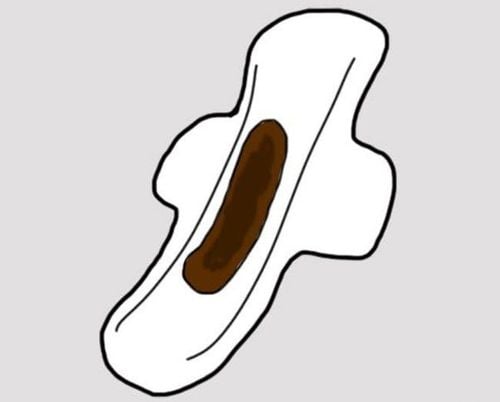This is an automatically translated article.
The article is expertly consulted by Master, Doctor Le Nhat Nguyen - Obstetrician-Gynecology Specialist - Vinmec Danang International General Hospital.A cervicectomy is a surgical removal of the cervix and the base of the vagina to remove the cervix, some surrounding tissue, as well as the upper third of the vagina and pelvic lymph nodes. The cervix is usually removed vaginally (called RVT) or sometimes through laparotomy (called RAT). The cervix is the female reproductive tract located between the uterus and the vagina. This is the narrow, short, cone-shaped organ sometimes called the mouth of the uterus.
1. Reasons for removal of the cervix
The main reason women have a hysterectomy is cervical cancer, which is one of the top three causes of death in women with cancer and one of the most common cancers affecting women. female reproductive tract.Many cervical cancers are caused by infection with the human papillomavirus (HPV) that is transmitted through sexual contact. According to the Centers for Disease Control and Prevention (CDC), 9 out of 10 cases of HPV go away on their own within two years, which means you don't have to have a surgical removal of the cervix. for the treatment of HPV infections.
Patients should talk to their doctor about HPV vaccination and regular reproductive health check-ups if:
You have had unprotected sex. You are transgender. You have had sex with many people You have a disease that affects your immune system. You smoke. You have a sexually transmitted disease. Early cervical cancer often goes undetected because there are no obvious symptoms. Late stage cases can cause the following symptoms:
Vaginal bleeding Pelvic pain Pain during sex

2. Advantages and disadvantages of cervicectomy
Surgery to remove the cervix and vaginal fundus (RT for short) is considered a safe alternative to hysterectomy (the English name is hysterectomy - removal of both the cervix and uterus). ) and is usually indicated for women with early-stage cervical cancer and tumors less than 2cm but want to maintain the ability to have children later. However, doctors do not guarantee you will definitely get pregnant in the future, so you should weigh up your cancer treatment and the possibility of becoming pregnant in the future.If you want to get pregnant on your own, you need a uterus to nourish the fetus, but when the uterus is removed, there will be nowhere for the fetus to grow.
According to a review of clinical studies, there were no significant differences in women with RT compared with those who had a hysterectomy in:
Rate of disease recurrence in the first 5 years Mortality in First 5 years Complications during and after surgery 2.1 Advantages One of the biggest advantages of RT over hysterectomy is the preservation of the uterus. Therefore, the patient is still able to get pregnant. Research has shown that 41 to 79% of women can successfully conceive after RT surgery.
For women with early-stage cervical cancer, other research also shows that RT has advantages over hysterectomy in other ways besides preserving fertility for patients such as:
Less blood loss Shorter hospital stay 2.2 Cons When performing RT surgery, the patient is required to be hospitalized and under general anesthesia, the risks include:
Infection Leaking urine Pain when sex Dysmenorrhea Blood clots Thigh numbness The risk of RT also includes a buildup of lymphatic fluid. This is the fluid that flows through the lymphatic vessels, helping to fight disease and infection. This buildup can lead to swelling in the arms, legs, and abdomen. Women who have had RT when conceiving are often advised to have a cesarean section.

3. How does the surgery take place?
RT is surgery performed in a hospital with general anesthesia. The surgeon will remove the lymph nodes in the pelvis and check them for cancer cells.If cancer cells are found in the lymph nodes, the surgeon stops the RT surgery. The patient will be informed of other treatment options (including hysterectomy with chemotherapy, radiation, or both).
If no cancer cells are found in the lymph nodes, the surgeon will remove the cervix, part of the vagina, and some surrounding tissue. They will likely put a stitch to hold the uterus and vagina together.
In addition, cervicalectomy can be performed by the following methods:
Radical vaginal trachelectomy. Radical abdominal trachelectomy Laparoscopic surgery by making a small incision in the abdomen and inserting a laparoscope to remove the cervix. Robotic arm surgery (or robotic trachelectomy) involves inserting surgical instruments into small incisions in the skin.
4. After cervical removal surgery
In general, RT surgery using laparoscopic methods or robotic arms is easier for patients to recover because they are less invasive. Most people will stay in the hospital for three to five days.After surgery, you may experience some problems such as:
Vaginal bleeding for two weeks or more Pain (you will be prescribed pain medicine) Using a urinary catheter for one to two weeks after surgery The patient needs to limit movement such as exercising, climbing stairs or even driving for a few weeks The patient is not allowed to have sex or put anything in the vagina until you see your doctor for permission performed, usually four to six weeks after surgery.
5. Side effects of RT . surgery

Pain Feeling weak Urinary incontinence Pain during periods Vaginal discharge Risk of infection Swelling of limbs Sexual dysfunction Sexual desire lower sex drive (although desire returns to normal by the end of 12th month after surgery) Worried about sexual ability Currently, Vinmec International General Hospital is fully equipped with methods to remove death supply, with the most modern and advanced equipment in Vietnam. In particular, the most prominent is Robotic surgery technique - this is the first private Robotic surgery center in Vietnam to treat cancer, digestive, urological - genitourinary, gynecological diseases... with a success rate of up to 95%. Vinmec International General Hospital has equipped the US-made Da Vinci Robot with a sophisticated and modern structure, with 4 arms that simulate almost perfectly human hand movements, meeting the needs of surgery. with the highest requirements.
Doctor Le Nhat Nguyen has more than 20 years of experience in the field of Obstetrics and Gynecology. Formerly a doctor of obstetrics and gynecology at Gia Dinh People's Hospital in Ho Chi Minh City. BS has high expertise and strength in the diagnosis and treatment of Obstetrics and Gynecology diseases. Currently a Doctor of Obstetrics and Gynecology - Vinmec Da Nang International General Hospital.
Please dial HOTLINE for more information or register for an appointment HERE. Download MyVinmec app to make appointments faster and to manage your bookings easily.














